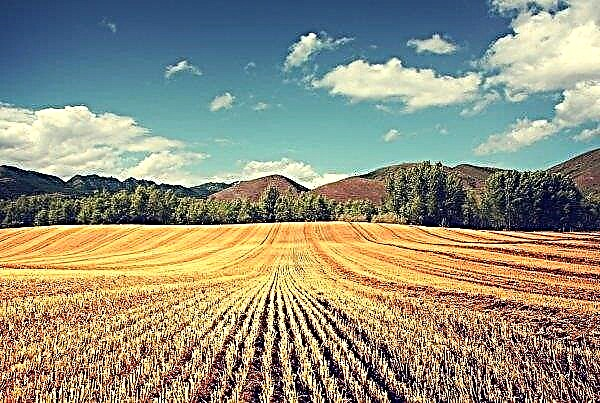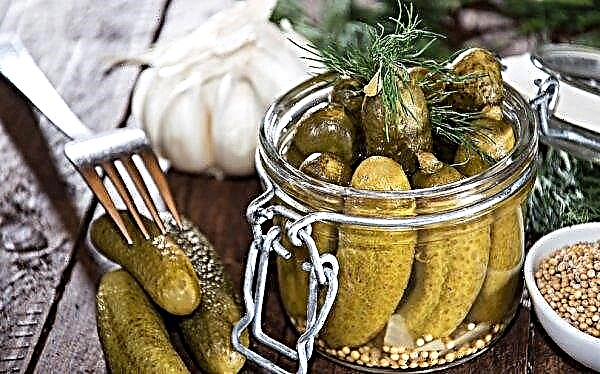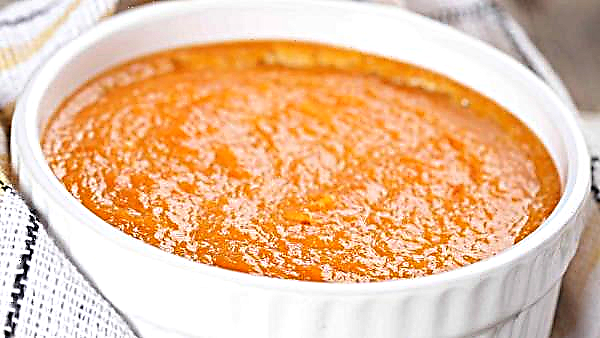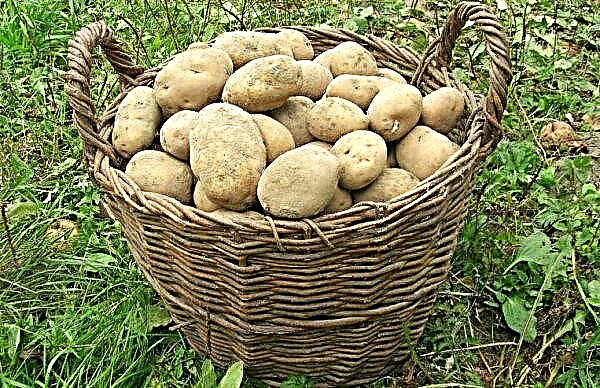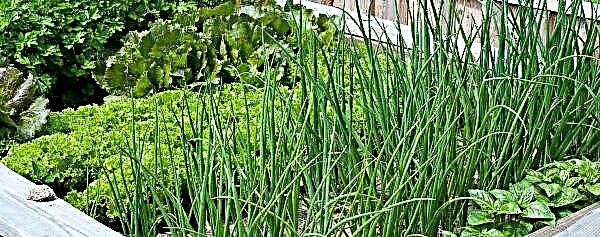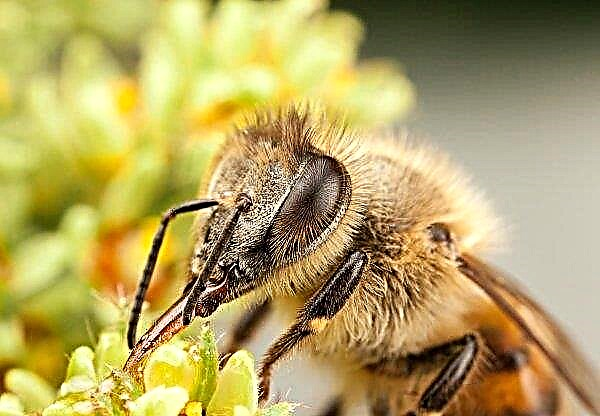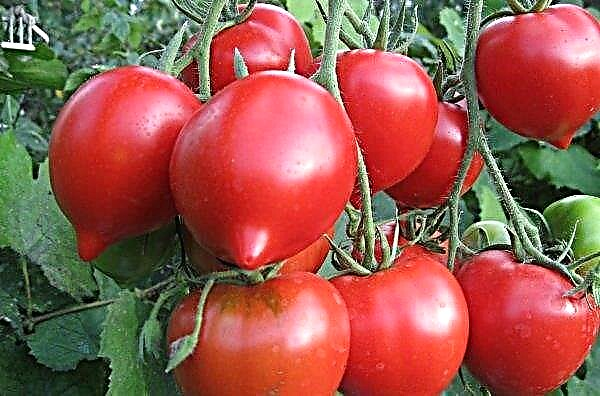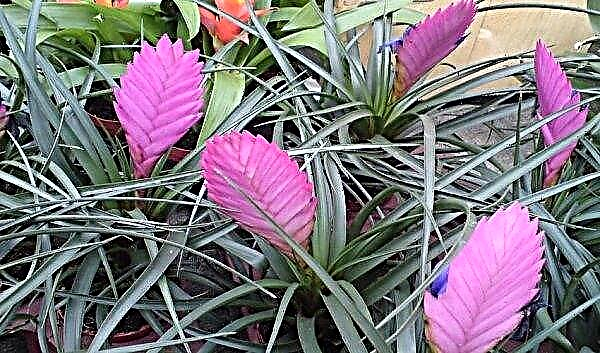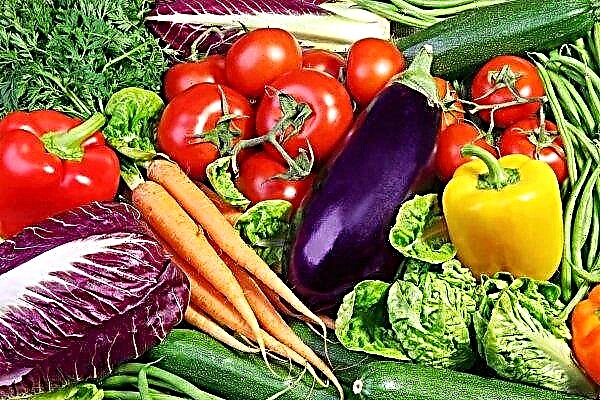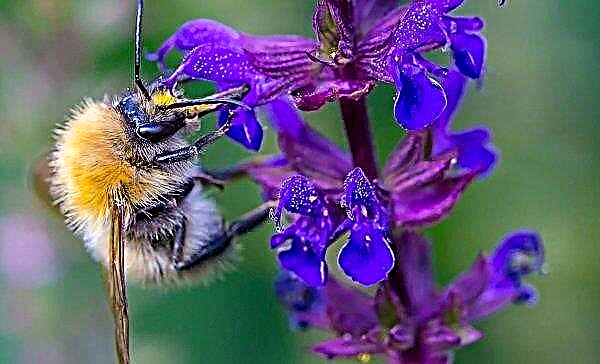For a year, each average European family throws about 300 used plastic bottles. This amount is enough to build a small greenhouse. Thus, it is possible to save the family budget, acquire an important object in the household and protect the environment. Find out how to build a bottle construction for plants yourself later in the article.
Bottles as a material for construction
About 450 million tons of bottle plastic are produced annually in the world, of which only 10% goes for recycling. The material is obtained from polyethylene of different strengths. It is characterized by lightness, transparency, it passes ultraviolet rays and oxygen well, and emits carbon dioxide outward. If these properties do not have the best effect on the storage of certain liquids, then they are very favorable for gardening.
Did you know? It takes about 550 years to completely decompose plastic. At the current rate of production of this material, our planet is completely covered with plastic before the process of its decomposition begins.
Advantages and disadvantages
For a good host, a plastic bottle is a free building material. In the case of the construction of a greenhouse, walls and a roof can be made from it.
 Greenhouse from plastic bottles in full
Greenhouse from plastic bottles in full
Plastic has proven itself in work. Knowing its positive and negative characteristics, the master will be able to use them advantageously. The table below will help him in this:
| Advantages | disadvantages |
| Strength, resistance to moisture and heat. | Installation of a bottle greenhouse will require a lot of time and painstaking work. |
| Lightness of material and work with it (in the presence of an assistant, a greenhouse can be built in one day). | It is difficult to wash and clean containers from labels. |
| Durability (shelf life of plastic bottles is 30 times that of plastic film). | |
| Heat-insulating qualities (it turns out the "thermos effect" created by the hollow internal parts of the bottles). Bottle greenhouse does not require additional heating. | |
| Resistance to strong winds and precipitation (the main thing is to correctly connect the structural details and the frame). |
Selection recommendations
To build a greenhouse or greenhouse, it is important to collect bottles of the same capacity and shape. Too small will complicate the installation of the structure, and large ones will have to be assembled for a long time. The best option is one and a half liter light tanks.
Did you know? In the world, 40% of total plastic waste is made up of plastic bottles.
The color of the material does not affect its performance, but good lighting is important for crops growing inside. better to avoid brown containers. Some owners use green fragments to decorate the building.
It is crucial that all bottles are solid, without any damage or defect. Mineral water tanks are preferred. They compare favorably with the thickness of the material. The larger the volume of the bottle, the thicker the walls will be, and the better they will retain heat inside the greenhouse.

Preparation for construction
The preparatory phase begins with the start of bottle collection. In the meantime, you need to determine the installation location of the greenhouse, its size, draw the drawings and get the bars for the frame. When planning the location of a structure on a site, consider soil fertility, light orientation, the location of groundwater, and distance from home.
Referring to these factors, agronomists are advised to be guided by the following rules when constructing a covering structure:
- Mount the building closer to home and communications.
- Prefer flat flat terrain. If there are slopes, they will need to be cut. Avoid lowlands where cold air accumulates, as well as melt and rainwater. It is good if the site is located on a hill.
- Choose places with nutritious moisture-permeable soil. It should not be excessively loose and soft. Black garden substrates are ideal for garden crops. Before installing the foundation, be sure to wait until the earth dries.
- Position the greenhouse in a southeast or south direction. So you can protect the structure from strong winds and provide the crops growing in it with good lighting. Make sure that nearby trees and tall buildings do not cast a shadow on the shelter.
Important! To increase the fertility of the soil during the wintering of the greenhouse, throw in as much snow as possible. It contains the elements necessary for the nutrition of the beneficial living creature that lives under the mulch.
Bottle preparation
A traditional design does not require a bottle greenhouse. It is important to determine its size and shape. For a 3 × 4 × 2.4 m structure with a gable roof, 600 liter bottles will be needed.
Further actions will depend on the installation method. If your plans include the use of whole bottles, you will need to remove their lower parts. In the case of plate-like construction, the procurement of parts is carried out by cutting off the bottom and top, and then cutting the middle part.
 Their preparation is the most difficult moment in the installation of the greenhouse. Each needs to be washed and cleaned of the label, as well as glue residue on the walls
Their preparation is the most difficult moment in the installation of the greenhouse. Each needs to be washed and cleaned of the label, as well as glue residue on the walls
Tools
In addition to bottles, for construction you will need wooden bars, as well as mounting rails, the number of which depends on the design being designed.
Accordingly, to work with such material, you will need:
- thin awl;
- cutter;
- hammer (screwdriver);
- nails (self-tapping screws);
- kapron thread (can be replaced with thick fishing line);
- roulette;
- mounting glue or sewing machine (needed for the construction of walls from cut bottle plates);
- level;
- hacksaw.
Important! Excessive loosening and fertilizing of the site can provoke violations of the natural structure of the earth. This is especially true for clay layers. When they are discovered, it is recommended that initially about 10 cm of gravel be poured onto the selected area, and on top of it, a thick layer of black soil should be covered.
Necessary materials
For the construction of a gable greenhouse measuring 3 × 4 × 2.4 m, you will need:
- 1.5 liter plastic bottles - 600 pcs.;
- wooden bars 3 m long - 2 pcs.;
- wooden bars 4 m long - 2 pcs.;
- mounting rails - 100 pcs.;
- 10 × 7 boards - 4 pcs.
 In addition, you will need to draw a diagram of the greenhouse, focusing on its height, width, length, shape of the roof, dimensions of the front door
In addition, you will need to draw a diagram of the greenhouse, focusing on its height, width, length, shape of the roof, dimensions of the front door
DIY construction
Construction begins on a site prepared in advance. Its area should provide on all sides an additional half a meter to the dimensions of the greenhouse frame, so that the structure is well lit and ventilated.
Important! So that the bottle posts do not sag inward and fall under the force of their weight, it is necessary to make a more frequent crate on the roof.
Method 1. From the bottles
Installation is not difficult even for novice gardeners. Work is carried out according to the instructions below:
- Using a hammer and nails, build from the bars greenhouse base. It is important that it is slightly elevated above the ground. Building a powerful foundation does not make sense because of the lightness of the material. An alternative would be a brick, cinder block or logs.

- We attach 4 bearing supports to the wooden base - bars of appropriate height. From the boards we make the frame. To do this, measure out 2 parts 3 m long and 2 parts 4 m long and pin them to the supports.
- In the center of the structure, approximately at a height of 2 m from the base, we do wooden lintel. This will enhance the strength of the greenhouse.

- Next, you can begin to assemble the walls. For this, prepared bottles are put on one another. Note that the bottom must remain with the bottom. A hole is made in it through which the mounting rail is pulled. The length of this part should correspond to the height of the walls. The resulting workpiece is tightly mounted on the ground and beaten its upper part to the frame. This is repeated until all the walls are sewn up. So that the upper fragments do not stagger, they are tightly strung on a fishing line, the edges of which are also attached to the frame. Do not forget to provide a door, which is also constructed from bottle posts. They are attached to the frame. Hinges are screwed onto the finished doors and hung on a loot.

- In a similar way we collect the roof. We form finished bottle posts in 2 rectangles and 2 small triangles of the corresponding sizes. Experienced gardeners recommend separately knocking down fragments of the roof and then string prepared bottles on them. At the final stage, the finished roof is attached to the frame of the walls.

It is important that the structure is airtight, so many owners cover the roof with plastic wrap. In this way, the gaps are eliminated.
Did you know? The first greenhouse in Europe was built in Cologne in 1240 by the famous gardener Albert Mangus. In honor of the arrival of the Dutch king William, he grew up in a specially created design luxurious flowering vegetation, which decorated the banquet hall. Many, including the Inquisition, considered all the efforts of the gardener to be witchcraft.
Method 2. From chopped plates
For construction, we need to build large rectangles from cut out plastic plates, the dimensions of which must correspond to the dimensions of the greenhouse. All other actions regarding the frame are performed by analogy with the previous method.
The mounting of the plates is as follows:
- We sew with the fishing line the required number of cut parts to achieve the desired length.
- We lubricate the joints of the plates with mounting glue. Alternatively, you can flash all the squares with a sewing machine or manually. The main thing is that the needle copes with the thickness of the plastic. Make sure the seams are overlapping. Experienced gardeners advise stitching the wall not in a single piece, but using thin mounting rails to divide them into vertical zones.
- We work on the blanks with nails to the frame along its perimeter. It is important that there are no gaps between the bars and the canvas.
- The roof is similarly made.

A greenhouse made of bottles is a profitable solution for economical owners. A simple construction will solve several problems at once: it will save you from plastic waste and will allow you to get an early harvest from home seedlings.





